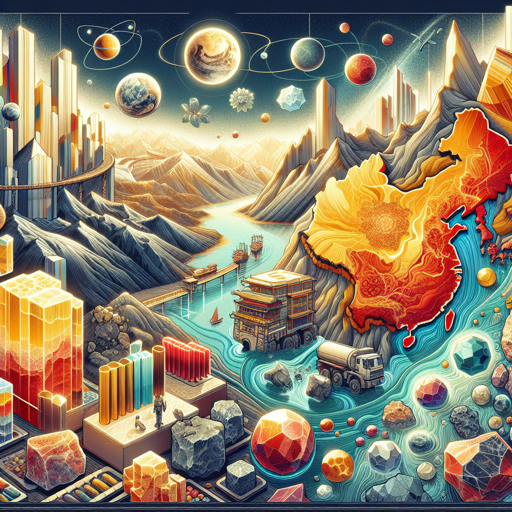Unearthing the Mineral Treasures of China
A deep dive into the rich mineral resources shaping China's economic growth

Introduction
China, a vast land with a diverse geological makeup, boasts a rich treasure trove of mineral resources. This mineral wealth, spread across the country’s diverse landscapes, plays a crucial role in shaping China’s economic growth and development. From the rare earth metals that power our modern technology, to the coal that fuels the nation’s energy needs, the minerals of China have a story to tell.
The Mineral Landscape of China
China’s mineral resources are as diverse as its landscapes. The country is the world’s leading producer of coal, gold, and most rare earth minerals. Additionally, it holds significant reserves of manganese, zinc, iron ore, and tungsten.
Coal
China houses the largest coal reserves in the world, with estimated reserves of 1.3 trillion metric tons. Primarily located in the north and north-west regions like Shanxi and Inner Mongolia, coal has played a critical role in fueling China’s rapid industrialization.
Gold
China is also the largest producer of gold globally. The majority of the country’s gold deposits are found in the eastern part of the country, in provinces like Shandong, Henan, and Jiangxi.
Rare Earth Elements
China dominates the world in the production of rare earth elements — a group of 17 minerals critical for manufacturing high-tech products like smartphones, electric cars, and wind turbines. The Bayan Obo mine in Inner Mongolia is the world’s largest known rare earth deposit.
| Mineral | Reserves (Metric Ton) | Location |
|---|---|---|
| Coal | 1.3 Trillion | Shanxi, Inner Mongolia |
| Gold | N/A | Shandong, Henan, Jiangxi |
| Rare Earth Elements | N/A | Bayan Obo, Inner Mongolia |
The Economic Impact of China’s Minerals
As Chinese philosopher Lao Tzu once said, “Great treasures come from humble origins.” This saying holds true for the mineral wealth of China. These minerals have significantly contributed to the country’s economic growth.
China’s mineral industry has been instrumental in the country’s transition from a predominantly agricultural economy to an industrial one. The widespread mining and usage of coal have powered the nation’s factories and electricity needs, contributing to rapid urbanization and industrial growth.
The extraction of gold and other precious minerals has also generated wealth and employment opportunities. Meanwhile, the country’s dominance in rare earth elements production has given it a significant advantage in the global technology and renewable energy sectors.
Conclusion
China’s bountiful mineral resources have been a cornerstone of the country’s economic growth and development. As technology continues to advance and the demand for resources like rare earth elements grows, China’s role as a global mineral powerhouse is set to continue. The mineral treasures of China, indeed, are not just buried in the ground, but they are also woven into the fabric of the nation’s economic tapestry.
For more information on China’s mineral resources and their impact on the country’s economy, check out this resource.
Note: The data presented in this article are based on various sources and may not be completely accurate. For precise information, always refer to official and authoritative resources.